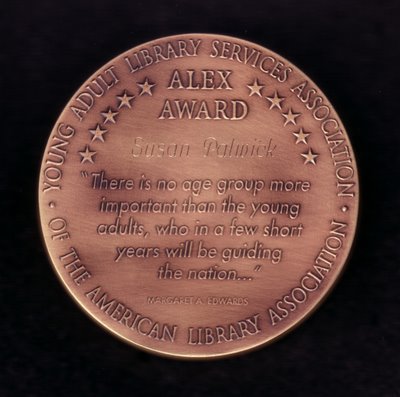When I decided to become a volunteer hospital chaplain, I got a lot of negative reactions from family and friends. “Oh,
no! You aren’t going to turn into one of those people who marches into a hospital room and starts thumping a Bible, are you?” “You aren’t going to turn into one of those people who shows up with a simpering smile, leaves a prayer card on the bedside, and vanishes again, are you?” “You aren’t going to turn into one of those people who says I have to accept Jesus for my illness to be cured, are you?”
No, no, and no. My training emphasized that the first principle of pastoral care is meeting people where they are, instead of telling them where they “should” be. Proselytizing is forbidden (and isn’t something I’d be inclined to do anyway). Our goal is to learn enough about the patient’s belief system to try to help that person marshal emotional and spiritual resources. This means that a lot of the time, I don’t even talk about God. I’ve had pastoral conversations about people’s grandchildren, about their pets, about
Buffy the Vampire Slayer. I try to learn what people love -- whether that’s cooking or genealogy or Little League -- because the things we love are the things we live for, and that means they’re the things that heal us.
But listening to all those horror stories about hospital chaplains, I remembered one of my own.
Caveat LectorI’ve dithered for a few days about whether to post this, because you can’t get the full effect of the gormless-chaplain story unless I first tell a gormless-gynecologist story and a gormless-ER-doc story. (Lest you think it’s all bad news, there’s a saintly ER nurse in there, too.) To tell those stories, I need to go into some fairly graphic and personal details that might embarrass people. They don’t embarrass me, but I don’t want to make anyone else uncomfortable.
I’m offering this as a cautionary tale to medical and pastoral caregivers about what
not to do, although I hope most folks would know better anyway. But if you’re embarrassed by graphic medical stories, especially about the female reproductive system, please don’t read this. Also, this is quite long. I considered breaking it up, but my husband thinks it should all be one post.
The Gormless GynecologistLong, long ago, in a galaxy far, far away (popularly known as New Jersey), I had an abnormal Pap smear. This meant that during a routine pelvic exam, my gynecologist found pre-cancerous cells on my cervix. To determine the next step in medical treatment, I needed a
colposcopy, a specialized examination and biopsy of the cervix.
Colposcopies are office procedures. Gary and I were living together, but not yet married. His best friend had just died of cancer, and so -- even though my gynecologist’s nurse assured me rather impatiently that the abnormal Pap was really nothing to worry about -- we were both anxious. Gary volunteered to come with me to the colposcopy, to hold my hand during the procedure. (This meant the
world to me. Any guys reading this: if you really want to score brownie points with your significant other, offer to go along during medical procedures!) The day before the procedure, he’d popped a tendon playing tennis, but -- in typical male fashion? -- he stayed quiet about how much pain he was in.
So we’re in my gynecologist’s office. I’m up on the table, in stirrups. Gary's standing beside me, holding my hand. My gynecologist, who’s young and female and subscribes to the “tell the patient exactly what you’re doing at each moment” school of medicine -- which I normally appreciate -- is giving me a perky, chatty tour of the procedure. “Okay, Susan, now I’m inserting the speculum! Okay, now I’m staining your cervix with vinegar! The vinegar makes the abnormal cells turn white under this special light we’re using! Oh, look! There are so many abnormal cells that your cervix looks like a glazed donut!”
Those were her exact words. I felt like I’d been punched in the stomach, but at least I was lying down. Gary was standing up. His calf was massively swollen from his athletic injury. His best friend had just died of cancer. The room was also rather warm. The upshot of all this was that he turned gray and began sweating copiously. “You don’t look too good,” the doctor told him.
She and her nurse promptly abandoned me to make sure Gary wasn’t having a heart attack. (He wasn’t.) They left me dangling in those stirrups, worrying about him, for a good twenty minutes. Because of all the confusion, when they did come back, they forgot to give me discharge instructions.
Discharge instructions include symptoms of post-biopsy infection: “If you develop nausea or a fever, call your doctor.” I hadn’t gotten the instructions. So two weeks later, when I developed fever, nausea, vomiting and diarrhea, I assumed I just had the flu. But after several days, the nausea turned into periodic waves of wrenching abdominal pain: pain that, when it hit every few minutes, left me gasping for breath and curled into a little knot of agony. You know that 1-10 pain scale, with 10 being “the worst pain you’ve ever felt”? This was a 10.
Enter Saint NurseGary and I went to the nearest ER, which happened to be a Catholic hospital. I was wearing jammies, slippers and a bathrobe, walking doubled over because of the pain, puking into a plastic bowl I was clutching to my chest. When we walked into the ER entrance, the person behind the registration desk took one look at me and said, “You go right back there and lie down, honey.”
By some fluke, the place was almost empty. I got prompt attention from a kind, funny, personable ER nurse. Between waves of pain -- now somewhat reduced by pain meds -- she asked me about my graduate work, chatted about my doctoral dissertation, and generally treated me like an intelligent, competent human. And when my bloodwork came back with a white-cell count of 29,000 (normal is between 5,000 and 9,000), she became very grave and quiet, and told me quickly and gently -- as someone else quickly and gently started an IV for antibiotics -- that I had a very serious infection and would have to stay in the hospital.
Enter Gormless ER DocI’d told Saint Nurse about the colposcopy, and the ER doc wanted to do a pelvic exam. This doctor had already lost points for telling Gary to go sit in the waiting room. My impression at the time was that he kicked Gary out because we weren’t married; he asked Gary to leave when he heard the word “boyfriend.” Maybe he would have asked a husband to leave, too. I don’t know. I wasn’t yet a churchgoer -- that wouldn’t happen for another few years -- and I was very conscious of being in a Catholic hospital. That definitely colored my perceptions of what followed. (I volunteer in a Catholic hospital now, and I love the place, but I’m also very sympathetic to patients who are nervous about being in a faith-based institution.)
Maybe the ER doc was having a lousy day, even though the ER was temporarily quiet. Maybe he was just very bedside-manner-challenged. Maybe what happened next had nothing to do with the fact that a) he knew I wasn’t married and b) I was about to be admitted to the hospital with a diagnosis of
Pelvic Inflammatory Disease. PID is most often caused by untreated STDs; it sometimes results in infertility, which will become important later in this story. My interpretation of events may have been swayed by the fact that the doctor was clearly from India and that his English wasn’t terrific; this made me wonder if he had more conservative beliefs about sexual mores than an American doctor might. (Someday I’ll post about the role of gender, race and social class in the emergency department. They definitely affect patient-staff interactions, but they aren’t often discussed.)
Whatever his reasons, this doctor gave me the roughest, most painful, most callous pelvic exam I’ve ever had. I clung to Saint Nurse’s hand, trying to be a good patient, trying not to whimper. When the exam was over, he took out the speculum, held it up so I could see the bloody pus on it, and glared at me as if I was something he wanted to scrape off the bottom of his shoe. “This is bad discharge,” he said, his voice dripping scorn. Saint Nurse squeezed my hand.
“I’m due for my period,” I said. “Could that be some of the blood?” (As it turned out, I had indeed just gotten my period.)
“Yeah,” Saint Nurse chimed in eagerly. “Could it?”
He curled his lip. “This is
really bad discharge.”
I felt like the Whore of Babylon. Why was he talking to me that way? I was already sick as a dog and about to be hospitalized; was he trying to make me feel even worse? Later, when Saint Nurse was taking me up to my hospital room, I told her, “You have a
much better bedside manner than he does.” She giggled. She didn’t seem to think he was a horrible doctor, so maybe he really was just having a bad day. He shouldn’t have taken it out on me, though.
Enter Gormless ChaplainUpstairs in my hospital room, where I went through severe separation anxiety because Saint Nurse had gone back downstairs to the ER, I lay in bed, wondering when I’d see another doctor. My eyes were tearing from the pain of the IV: they had me on doxycycline, which is great stuff (it brought my white count back down to 9,000 in two days) but also burns the veins going in. I didn’t expect to see another doctor that night, but I was sure I’d see one in the morning.
The next day, my sister and mother visited, and Gary came and played Scrabble with me to distract me from the pain of the IV -- I got a new dose of doxycycline every twelve hours, and quickly learned to dread it -- but no doctor came.
The next morning, my aunt and uncle and several friends visited. Still no doctor. In the afternoon, my sister came by again, and she was still there when a short, excessively cheerful man appeared in the doorway and said, “Hi, Susie! I’ve come to see how you’re feeling!”
I stared at him. “My name’s Susan.” Blood relatives and extremely close friends who’ve known me for longer than twenty years get to call me Sooz.
Nobody calls me Susie. “Are you my doctor?”
He chortled maniacally and bounded a few feet into the room. “Well, hi there, Susie! So how are you today?”
My sister looked alarmed. I shrank back against my pillows and tried to stay calm. “I prefer ‘Susan,’ thank you. I’ve been waiting to see a doctor. Are you my doctor?”
He beamed at me and hopped closer to the bed. “So, Susie, you seem to be in a good mood!”
At that point, I lost it.
”My name’s Susan. Who are you?”“I’m the chaplain!” he said, chuckling. (My sister told me later, “You should have seen the look of relief on your face when you found out he wasn’t the doctor.”) He asked me if I’d like him to pray with me. I thanked him but explained that no, I wasn’t religious. It turned out that he was a Catholic priest. Somehow we started making small talk -- I didn't know that I could tell the chaplain to go away, and I wasn’t going to kick a priest out of my room in a Catholic hospital -- and discovered that we were
both writing doctoral dissertations. He asked what mine was about, and I told him that I was writing about runaway mothers as figures of social reform in nineteenth-century British and American women’s writing.
He beamed at me. “Oh, how wonderful! Motherhood is women’s highest calling!”
I think my jaw dropped. The dunderheaded sexism of the comment would have been bad enough, but I was in the hospital
with a diagnosis of a condition that could have left me infertile.
Now, I was positive that I didn’t have classic STD-related PID (and indeed, the STD tests came back negative). I was positive that the infection was somehow related to the colposcopy, although there was no way to prove it. And I’ve never wanted kids, so the fertility issue was far less important to me than it would have been to most women.
But he had no way of knowing any of that. If fertility had been an issue for me, his comment would have been devastating (even aside from its dunderheaded sexism), especially after I’d felt so judged by the ER doctor. “Whore of Babylon, your licentiousness has barred you from Woman’s Highest Calling!” For many reasons, I wasn’t about to buy into that message, but many other women might have.
I don’t know if the chaplain had access to my chart or not, and I don’t know if he’d have had any clue of what “PID” meant if he’d read it. When I became a chaplain myself and worked on medical floors, before I discovered that I preferred the ER, we were required to chart on patients (“Prayed w/pt” was the standard note). When I could find the chart -- which wasn’t often -- I usually tried to make some sense of the History & Physical section so I could suss out any potential landmines
before I met the patient.
Nobody’s perfect. I believe that this chaplain was a genuinely sweet, if gormless, man who was truly trying to cheer me up. Even at the time, I wasn’t as upset with him as I was with either my gynecologist or the ER doc, and now I have quite a bit of sympathy for him. I know I’ve put my foot in it with patients sometimes too, and we worship a God of forgiveness.
But the lessons remain. Medical caregivers:
please try to think about how your words would sound to you if you were the patient. Pastoral caregivers:
please remember to introduce yourselves and your function right away, and try to avoid bringing up potentially sensitive subjects unless the patient does so first. And if you have any access to information about the medical condition being treated, educate yourselves!
EpilogAfter I’d gotten out of the hospital and had recovered completely from the infection, I had laser surgery to remove the abnormal cells from my cervix. (I had a bunch of other tests, too, to make sure nothing else was wrong, but that’s another set of posts.) I’m delighted to report that since then, I’ve been fine, and all of my Pap smears have been normal.








